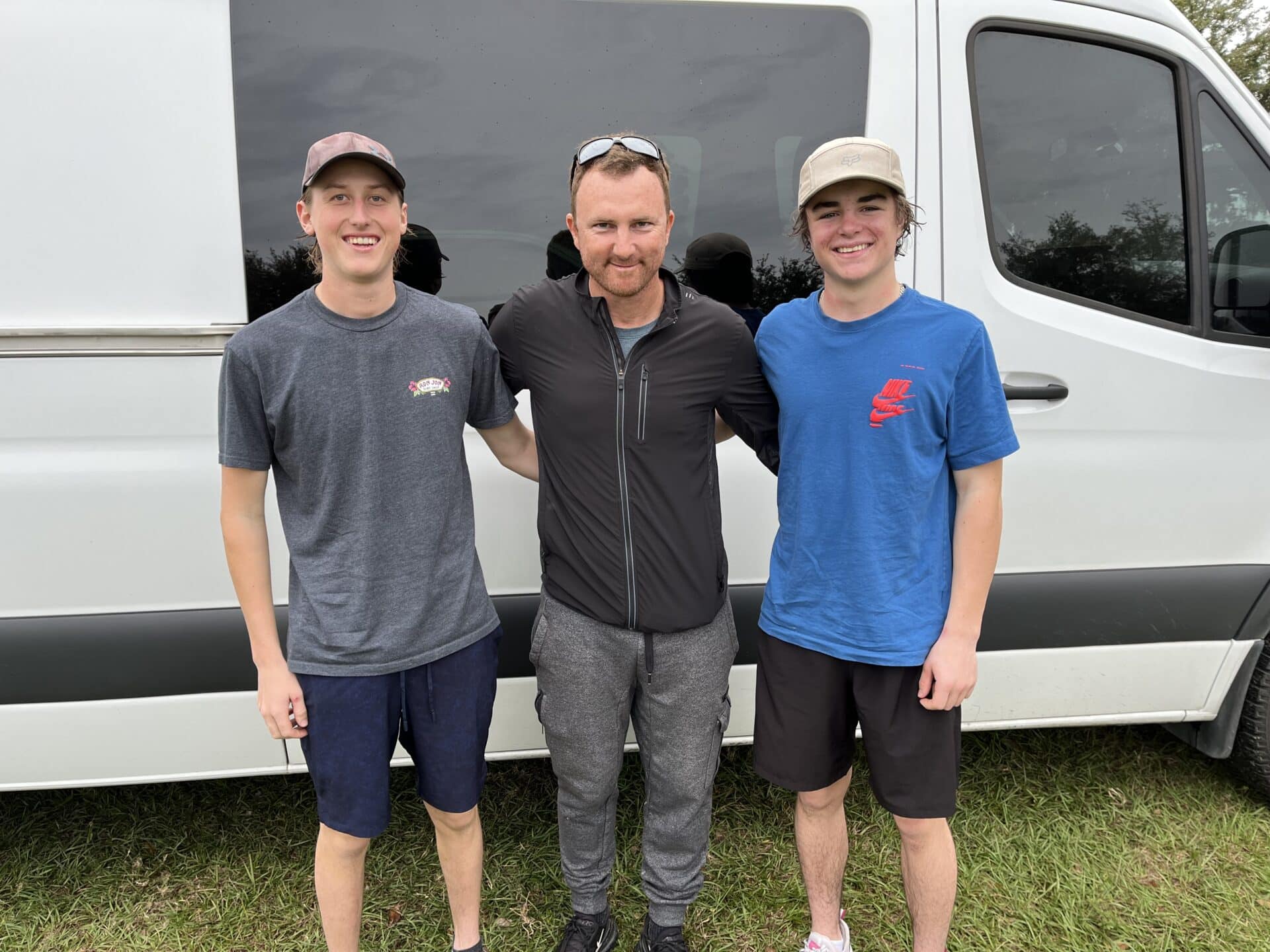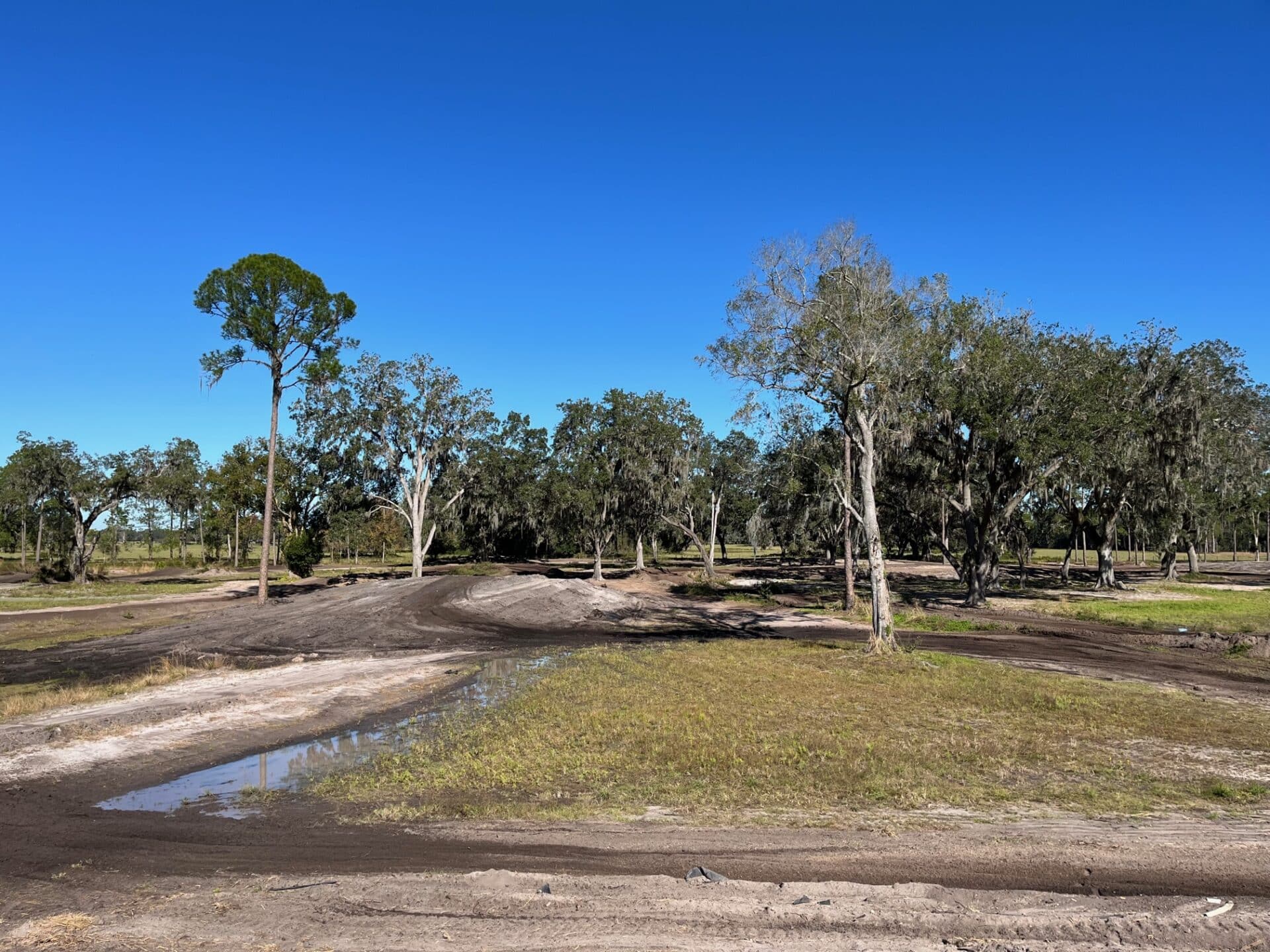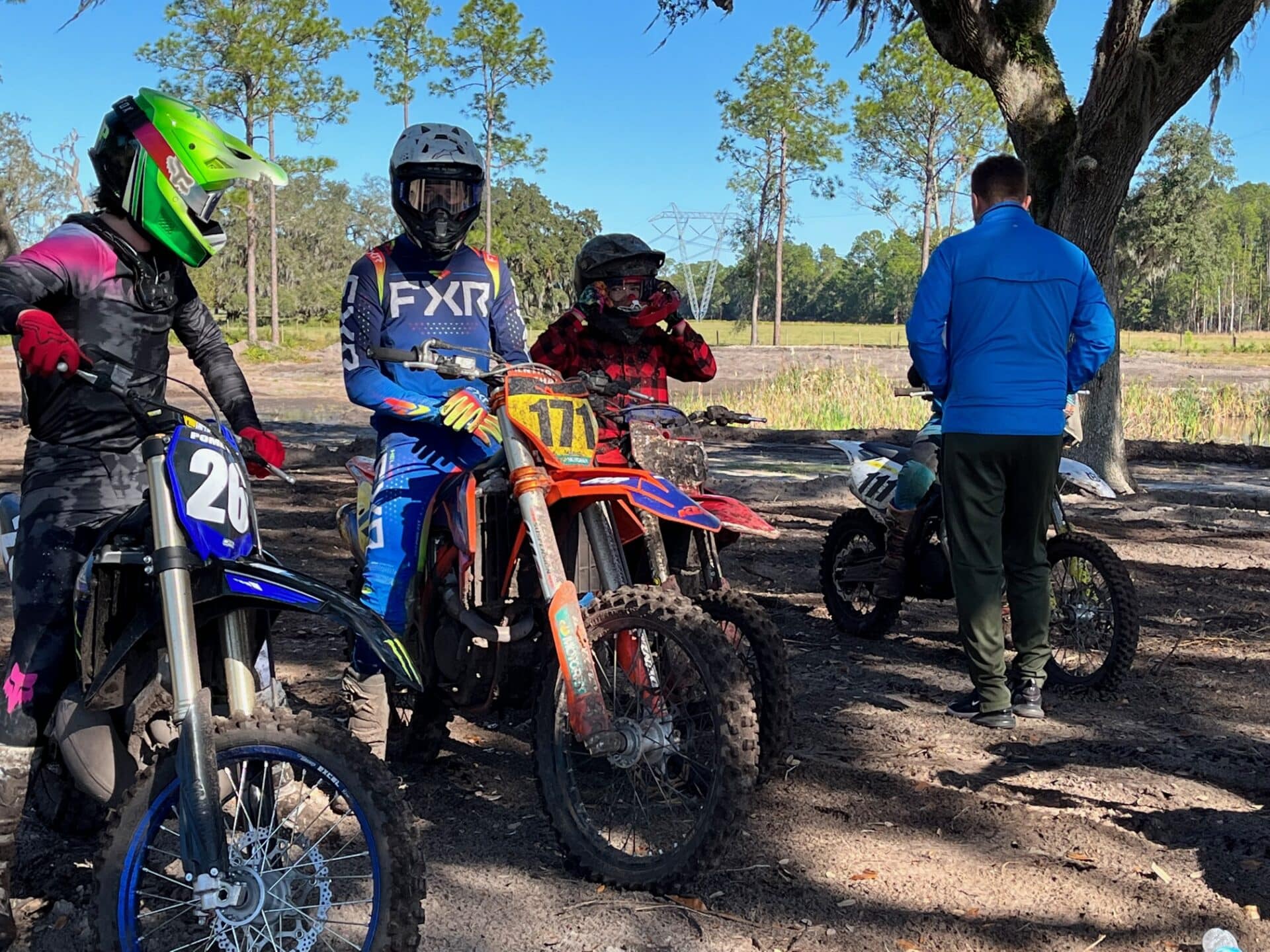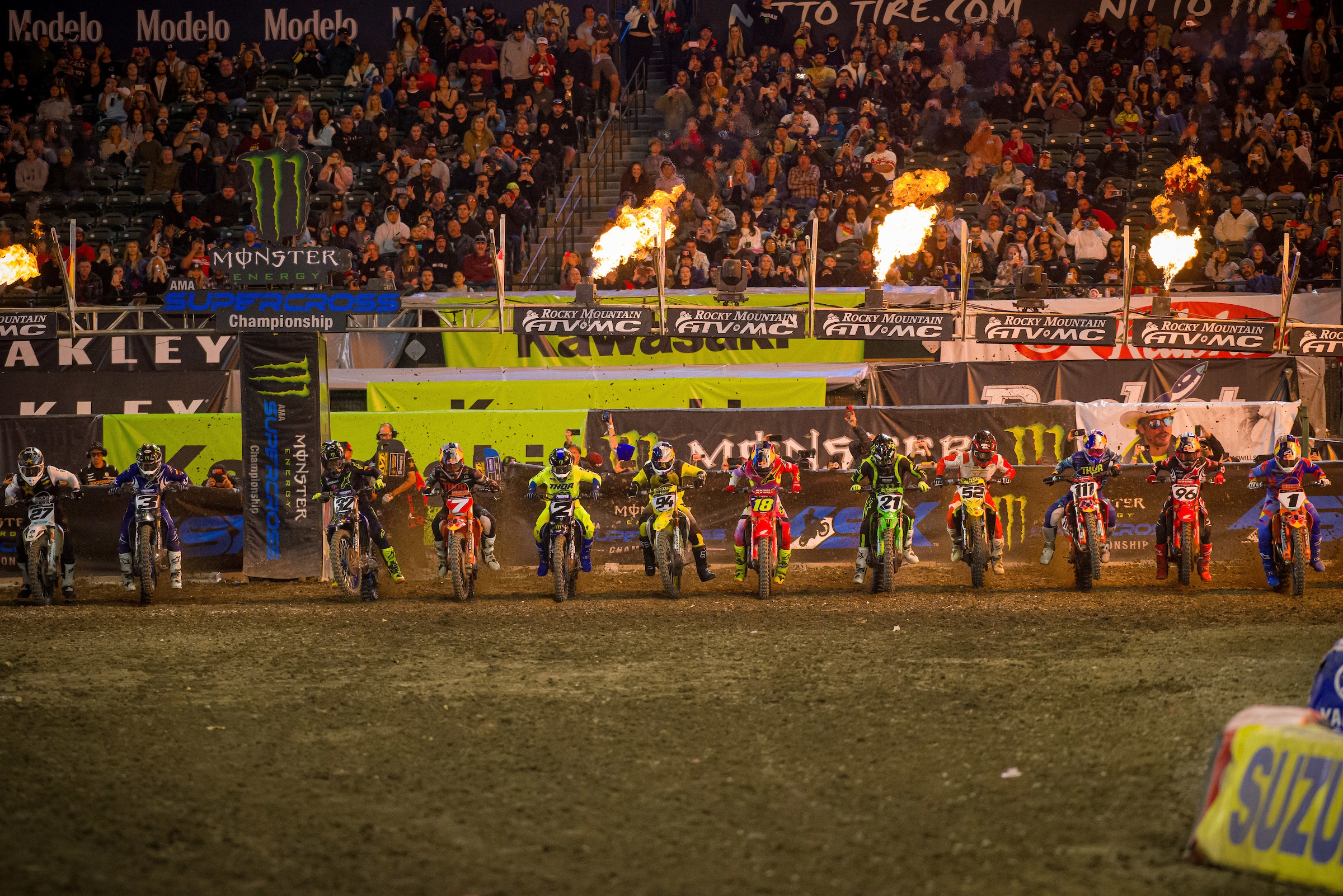From the moment he left South Africa in search of global motocross stardom Tyla Rattray has known that hard work and dedication are the two most important things. Through his time in Europe, he battled through injuries and adversity until he finally achieved his goal of being a World Champion in 2008. After that Tyla headed to the USA, where he found success in the 250 class finishing second overall in the Outdoor Motocross Series two years in a row. During those years, he learned a lot about how to win and how to be successful and now Tyla is giving back by coaching riders and sharing his expertise. Recently Tyla has worked with young Canadian riders like Ryder McNabb, Josh Bryan and Bryce Wadge. We caught up with Tyla this week as we had a chance to ride with his crew and watch him train his group of talented.

MXP: Hey Tyla! First off, thank you for having us out to ride and watch you in action. Over the past few years, I’ve heard nothing but great things about how you train riders, and you’re overall outlook on this sport. You approach training riders from both a physical and a mental aspect. Is this something you developed especially for training, or is this how you went about your own riding?
TR: Good question! I think it’s the way I approached my own racing and it’s what worked for me. So naturally, I brought that over to how I train riders today. I’ve been doing this for a few years now, so I’ve learned a few things about how to best get through to each rider. Obviously, what works for one rider isn’t going to work for another, so as a trainer, you have to figure that out. Basically, my job is to identify each riders weakness or weaknesses and try and turn them into their strengths. Whether you’re a pro rider or an amateur rider, every rider has a weakness, you just need to work on things and get better.
Obviously, correcting bad habits takes time and you have to stay on them. Ideally, how many times a week do you think is best for a rider to work with a trainer?
It’s almost impossible to work through things with a rider if you’re only seeing them once a week so working with someone 2-3 times a week is best. For the past few months, I’ve been taking this group of riders to various tracks so they can work on different things and also to keep them fresh. As you saw yesterday the track at my house is sandy loam, and it tends to get fairly rough. Today at the Farm Dade City the track is harder packed and has some ruts and some big jumps so my riders are getting the best of both worlds. Last week we went to Croom to ride so that was another different condition. This will make them better riders because when they go to races they’ll be able to adapt quicker to different track conditions. One of the big reasons we’re seeing riders from Europe come over to the USA and be so good is that over there they ride so many different tracks. Even a rider like Jett Lawrence spent some time racing in Europe so that is why he’s been good on all types of tracks. When a young rider is still developing, it’s very important that they ride as many different conditions as possible.
You mentioned breaking riders bad habits and turning them into strengths. This takes time and patience without a doubt. From your experiences which level of rider struggles more with this process? Is it a pro rider who is trying to make a living each weekend and is reluctant to try new things, or is it the amateur rider who wants to get better right now?
Everyone who comes to me wants success fairly quickly; that is just human nature. Pro riders are challenging because in most cases, they’ve been doing this for a long time and that means their bad habits have been a around for a long time also. On the other side of that, a young amateur rider is still fairly new to the sport so their habits aren’t so ingrained. Also, kids learn quickly and they’re more open to change. Every level of rider has their challenges and that makes my job a little more interesting I guess.

Speaking of pro riders, are you working with any right now or will you be in 2023?
As far as USA pro riders go, I’m not working with any currently. For them it’s SX season so all their focus is on training for that. I don’t have a SX track at my farm right now so sadly that isn’t working out as it did last year. I enjoy working with pro level riders but to do it properly you have to go to the races with them. They want you there during the week and also at each race so you can see what they’re doing and also to watch what other riders are doing. It’s a full-time deal for sure. I got away from that a few years as my son was riding and racing, and I wanted to be home as much as possible to help him.
You also worked with Ryder McNabb earlier this year. Is Ryder coming down again in the new year?
Yes, Ryder was here this past spring and he’ll be coming back down soon. He’s obviously coming off a solid season in Canada, and it was good to see him win the 250 title. I’m looking forward to seeing him again soon.
I was thinking that if you look back at almost all of the South African riders that have found success on the world stage. Although you all have different styles and techniques on the bike, you all have that hard-working, no BS way of doing things. Why do you think that is?
Well, I can only speak for myself, but when I left South Africa to go to Europe I was young, and it was just my mom and I, and there was really no going back. It was either make it as a pro rider or go home and work a 9-5 job and have a completely different life. When we got to Europe, we didn’t know how to do things or how to speak the language. We had to learn as we go, and like I said, failure wasn’t an option so I did everything possible to find success.
For you, which was more challenging, leaving South Africa for the first time to go to Europe, or leaving Europe to go to the USA?
Definitely, when I first left South Africa to go to Europe. We had nothing so we had to earn everything. Also, with Europe being so different from what I was used that added to the difficulty. By the time I came to the USA I was a World Champion, and I knew how to be successful. Also, the weather and the tracks in the USA are similar to SA so it didn’t feel too different.

When you came over to North America you rode for the powerhouse Pro Circuit Kawasaki Team. Did you have a good relationship with Mitch Payton?
Yes, Mitch and I got along great, and even to this day we’re still friends and we still talk. When you ride for Mitch all he asks is that you do the work and you give it everything you have everyday. I did that so everything was great.
Did you feel a lot of pressure when you came over to the USA? I mean, you were going to a team that was used to winning and used to bringing riders over from Europe.
I don’t know if I felt pressure, but I knew I had to perform and learn things quickly. But it was no different than when I had gone over to Europe from SA. I think that experience helped me deal with the task of coming over to the USA.
Well Tyla, your racing career was most certainly something to be proud of, and I think it’s great that you’re giving back to the sport by training our young riders. Thank you for having us out for a few days. If a Canadian rider is sitting at home and thinking about coming down to Florida in the new year to do some training with you, what is the best way to get in touch with you?
The easiest way is to just DM me on my Instagram (@tylarattray) and I’ll get back to them. I’m glad you enjoyed the past couple of days, hopefully, you can make it back down in the spring.





